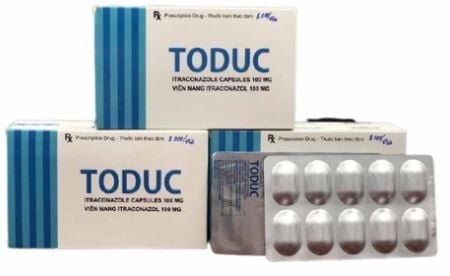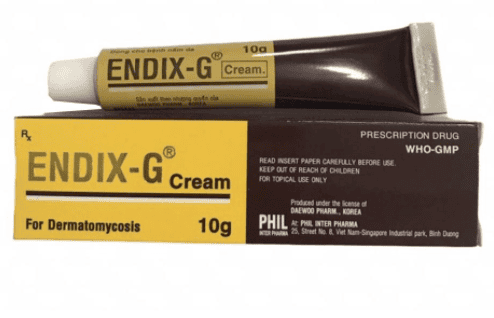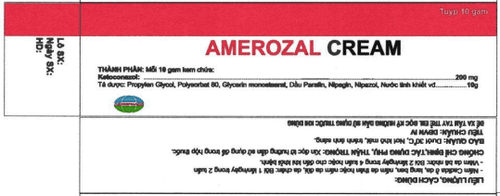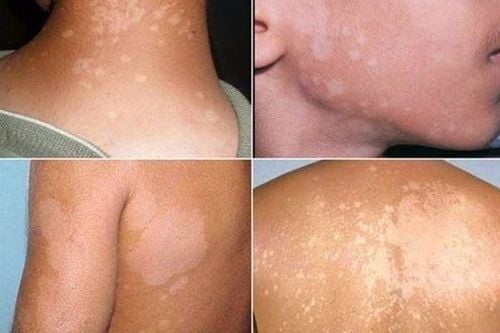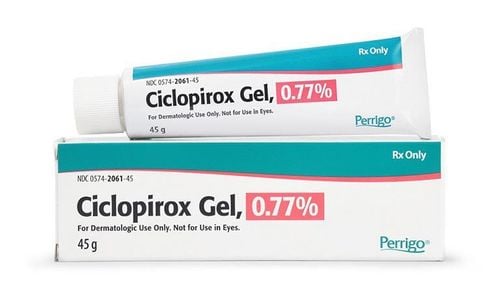This is an automatically translated article.
Mycorozan contains the active ingredient Ketoconazole 2g, which belongs to the group of drugs for the treatment of dermatological diseases. The drug is prepared for human consumption in the form of a skin cream. So what does Mycorozan drug work and how to use it?
1. The effect of the drug Mycorozan
Mycorozan has antifungal activity that inhibits Ergosterol biosynthesis. Therefore, it changes the permeability and function of the cell membrane, has a strong antifungal effect against dermatophytes and yeasts, and very quickly relieves the pruritus.
Indications to use Mycorozan drug for the following cases:
People with fungal skin infections such as: Fungal infections in the body (ringworm, strabismus), tinea pedis, inguinal fungus, fungus of the feet, hands. Treatment for people with Candida infections, vitiligo. Seborrheic dermatitis. Note: Mycorozan drug is not used for cases of hypersensitivity to any ingredient in the formula.
2. Dosage and how to use Mycorozan
Dosage of Mycorozan is recommended as follows:
Candida in skin, tinea pedis, tinea versicolor, tinea pedis, tinea versicolor: Apply 1 time/day for 2 weeks. Seborrheic Dermatitis: Apply twice a day for 4 weeks or until cured. Note: After the symptoms disappear, additional treatment is required for at least a few days. Along with that, it is necessary to use hygiene measures to prevent recurrence of fungal infections.
How to deal with overdose:
Some symptoms of drug overdose include: On the skin causing erythema, edema and burning sensation. Usually these symptoms go away when the drug is stopped. If you accidentally overdose or swallow and serious side effects appear, you should immediately seek medical attention for timely treatment.
3. Side effects of the drug Mycorozan
Some unwanted side effects may be encountered when using Mycorozan drugs include:
Common symptoms:
Burning blisters in the skin; Erythema, itching at the site of application; Uncommon symptoms:
Contact dermatitis, oily skin; Rash, peeling skin; Bleeding, dermatitis, dry skin, discomfort, irritation, paresthesia, reaction at the site of application. When there are unusual symptoms or unwanted effects of the drug, users should stop using it, immediately notify a doctor or pharmacist for diagnosis and timely treatment.
4. Mycorozan drug interactions
No drug interaction studies of Mycorozan with other drugs have been performed. However, to ensure the best safety and effectiveness when taking it, tell your doctor or pharmacist about all medicines, health products, foods you are using and other diseases that you are taking. acquired for proper diagnosis and prescription.
5. Some notes when using Mycorozan
Do not let the cream get into the eyes. If used concomitantly with a corticosteroid, in order to prevent a rebound phenomenon that occurs when topical corticosteroids are discontinued after a long period of treatment, Ketoconazole can be applied at night and continued with mild corticosteroids in the morning. shining. The dose of corticosteroids can then be gradually reduced and stopped completely within 2 to 3 weeks. Propylene glycol skin swelling or local inflammatory skin reactions caused by Cetyl stearyl alcohol in the excipients may occur. Women who are pregnant or breast-feeding: should be cautious when using the drug and must consult a doctor before use. Above is information about uses, dosage and precautions when using Mycorozan medicine. Patients should carefully read the instructions for use, consult a doctor before use to ensure the effectiveness of treatment.




